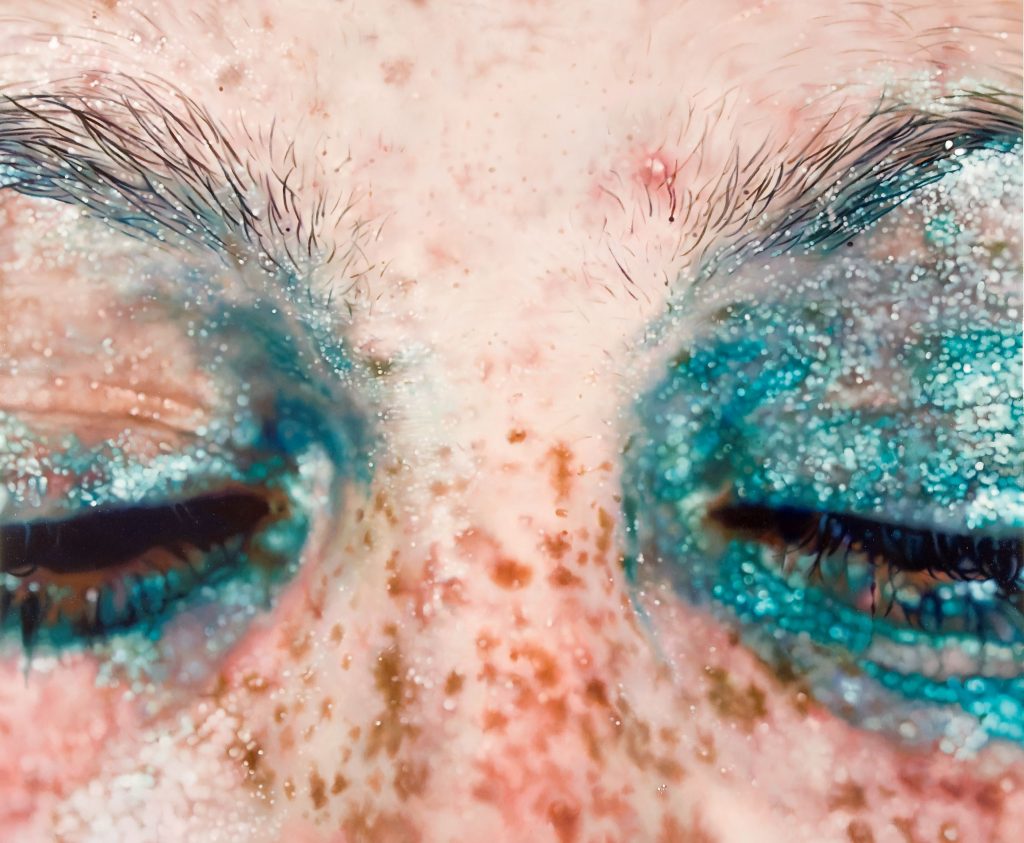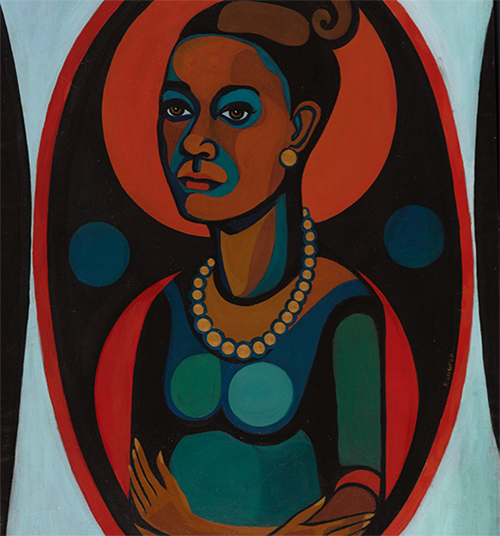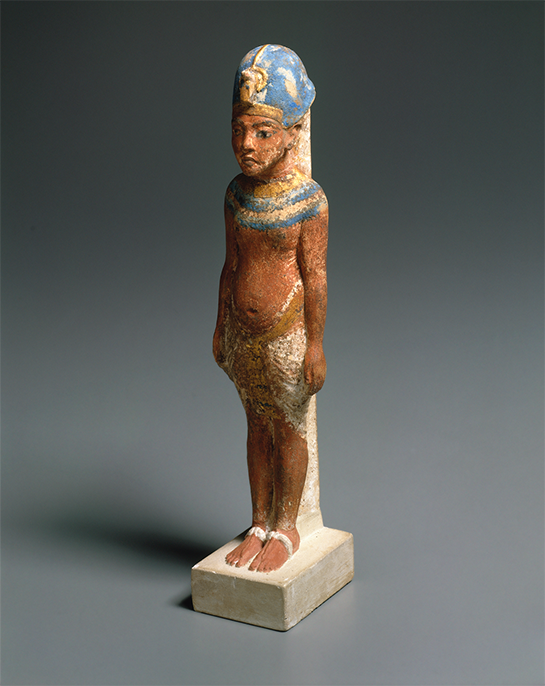A Conversation with Brooklyn Museum Curator Catherine Morris
For the ten-year anniversary of the Elizabeth A. Sackler Center for Feminist Art, Brooklyn Museum curator Catherine Morris planned a series of exhibitions titled A Year of Yes: Reimagining Feminism, which would begin in October 2016 and end in early 2018. The various exhibits would examine artwork, social movements, and historical periods with a keen feminist eye. When reflecting on the past decade and the ways in which society and media had gradually come to accept feminist methodology more and more, Morris was struck by a thought: how long does a place like the Sackler center need to exist? Is there a day when we will no longer need a center devoted to preserving and educating the public on feminist art?
She did not have to wait long for an answer. In early November, Marilyn Minter’s: Pretty/Dirty exhibit was underway, and Morris and her fellow coordinators looked on with pride. They expected Marilyn Minter’s examination of female body image in America to coincide with a Hillary Clinton presidency; a retrospective on the commercialization and objectification of the female form timely paired with a much-anticipated first female presidency. The coincidental juxtaposition of the two would have in and of itself been a lesson, a lesson that boldly said, “Look how far we’ve come!” Instead, when Election Day arrived the lesson became, “There is still so much left to do.”

Morris no longer feels like she needs to question the existence of the Sackler Center; she sees Donald Trump’s presidency as a confirmation of its necessity. “I have to say, since November 8, I don’t want to have that conversation anymore,” said Morris. “That day answered that question for me, at least right now, and for the next four years.”
Morris went on to discuss how the election results shifted the intention and reception of A Year of Yes’s programming. Minter’s show took on an entirely new energy, and suddenly became one that “needed to protest, to talk, to strategize.” Alternatively, the concepts and themes conveyed in another show, We Wanted a Revolution: Black Radical Women 1965-85, felt eerily prescient. It is difficult to ignore how, overwhelmingly, white women voted for Trump while a majority of black women voted for Clinton, statistics which reveal in Morris’ mind, “that kind of contested relationship between women who on so many agenda levels want to be allies” but find themselves separated “in a politically divided and racially fraught moment.”

We Wanted a Revolution, which opens April 21, details how the feminist movement emerged in African-American communities in the sixties and examines what Morris openly identified as an “uncomfortable relationship between women of color who did not necessarily always feel welcome, understood, or even heard, within the context of second-wave feminism which was largely white, middle-class, post-college degree-[holding] women.” Morris noted that it is worth looking at both feminist history and its present-day practice with a critical eye, cracking it open to point out the flaws that lie within. Even Minter often faced criticism from fellow women for her artwork, despite being an outspoken and self-identifying feminist herself. “Feminism is not a monolithic thing,” insisted Morris. “It is in fact, intersectional in and of itself, and is only enriched by having these complicated discussions.”
Even the word feminism itself carries a weighted and complex history. While men and women alike once balked at the word, which evinced mental images of enraged women brandishing burning bras, it has come a long way in the national lexicon. It still faces criticism, but it also holds a new status in the media, with pop culture icons like Beyonce and Taylor Swift declaring themselves feminist as mass crowds of impressionable girls look on in admiration. Morris said in her lifetime, “the ebb and flowing of the term is enormous” and it has gotten to a point where “in the digital era, its value changes from week to week.”
For her, this is evidence of the word’s importance, even if some view it as radical or demeaning towards men. “We also are acknowledging the fact that even if the term is problematic, the impulse towards gender equity or parity is certainly a human rights issue that I think you’d be very hard pressed to find anybody say they didn’t agree with,” reasoned Morris. “Different people just have different ways of defining it, contextualizing it, being comfortable with it.”
This range in interpretation and definition extends to the series of exhibits themselves. Despite varying subject matter, the exhibitions are all tied together by the unique tools feminism has provided historians; one of the most important of these tools being historical revisionism, which allows canonical histories to be rewritten. Consider Judy Chicago’s The Dinner Party (1974-79), a commemorative art piece depicting a banquet with a place setting reserved for thirty nine women of historical importance. Morris explained that “even in the earliest moments of second wave feminism, artists, curators, and historians were really wanting to change history; to talk about the people who were overlooked and put them back into it.”

Historical revisionism also helps to understand the past in new ways. For instance, A Woman’s Afterlife: Gender Transformation in Ancient Egypt may look back on a time period when feminism did not yet exist, but it proves that exploration of a subject through a particular lens can unearth new discoveries. Morris said that with more women entering the field of Egyptology, unique conclusions are being drawn by archaeologists who are able to “look at things differently and ask certain questions, and as a result, get different answers.”
Morris hopes that those who come to the Brooklyn Museum to experience any of A Year of Yes’ many exhibits leave with a new understanding of the world around them and recognize the value of making room for other people’s stories. The driving force of the exhibition series is to be a space of inclusion and education. “I think that as I have said many, many, times I am really proud to be the curator of the Center of Feminist Art and not the Center of Women’s Art,” said Morris. “I think feminism applies to everybody.”
Upcoming and ongoing exhibitions:
Infinite Blue (Nov. 25, 2016 – Nov. 5, 2017)
A Woman’s Afterlife: Gender Transformation in Ancient Egypt (Dec. 15, 2016 – ongoing)
Georgia O’Keefe: Living Modern (March 3, 2017 – July 23, 2017)
Utopia Station (March 2017 – ongoing)
We Wanted a Revolution: Black Radical Women, 1965-85 (April 21, 2017 – Sept. 17, 2017)
The Roots of “The Dinner Party” (Oct. 20, 2017 – early 2018)
A Feminist Timeline (Oct. 20, 2017 – early 2018)
https://www.brooklynmuseum.org/exhibitions/year_of_yes_reimagining_feminism
